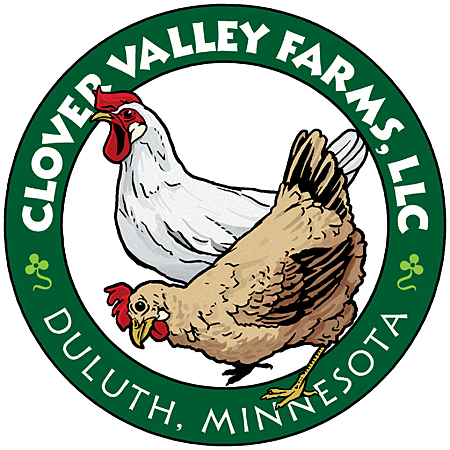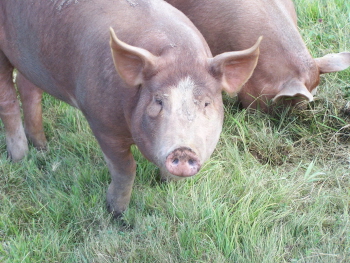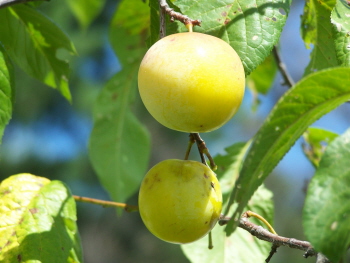Yields & Profitability:
Hogs
As discussed under Assessing & Planning > Business Planning, 2010 was Jeff and Cindy’s second year selling hogs. Table 11 shows that they experienced a net income of $171 from their hog enterprise in 2010, though as with poultry, the calculations do not account for labor costs. The table assumes that all five hogs made it to processing, for a net income of $34.20 per hog, though two were lost to vandalism (see Production > Production Methods > Hogs). Jeff and Cindy planned to try raising five hogs again in 2011 and hoped to increase to eight hogs by 2013. They are also exploring options for farrowing their own feeder pigs as a way to increase profitability.
Cost per feeder pig1 |
$60.00 |
Starter ration cost2 |
$582.00 |
Finish ration cost2 |
$2,192.00 |
# hogs processed1 |
5 |
Sale price (per lb.) |
$2.95 |
Avg. processed weight (lbs.) |
220 |
Gross income |
$3,245.00 |
Total costs3 |
$3,074.00 |
Net income |
$171.00 |
1 Calculations assume all five hogs survived until processing time, though two were lost to vandalism in August (see Production > Hogs). |
Farmer’s Perspective: Lessons Learned As noted in Table 11, Cindy and Jeff went through 132 pounds of finish rations per week per hog in 2010. This equates to over 18 pounds per day, and with a 14-week finishing time, more than 1,800 pounds of feed to bring each hog to finish weight. This total amount of feed was over twice the industry standard of about 740 pounds (according to Wayne Martin with University of Minnesota Extension). Unfortunately, this was an expensive way to realize their feeding system needed to be modified. Up through 2010, based on consultations with other producers and with written sources, they had used hopper feeders and gave the hogs free access. This approach resulted in about half the food being spilled and going uneaten, perhaps due to the hogs not liking some component of the ration. In 2011, Cindy and Jeff started filling rubber pails with feed twice per day and removing them after the hogs had eaten what they could right away; the hogs then foraged on pasture for the rest of the day. This approach may not work for someone with more hogs, but Cindy and Jeff feel it works well for their small numbers. The hogs in 2011 ate about 10 pounds each per day, cutting Cindy and Jeff’s feed costs by almost half and bringing them more in line with the industry standard for production. |
 |
 |


